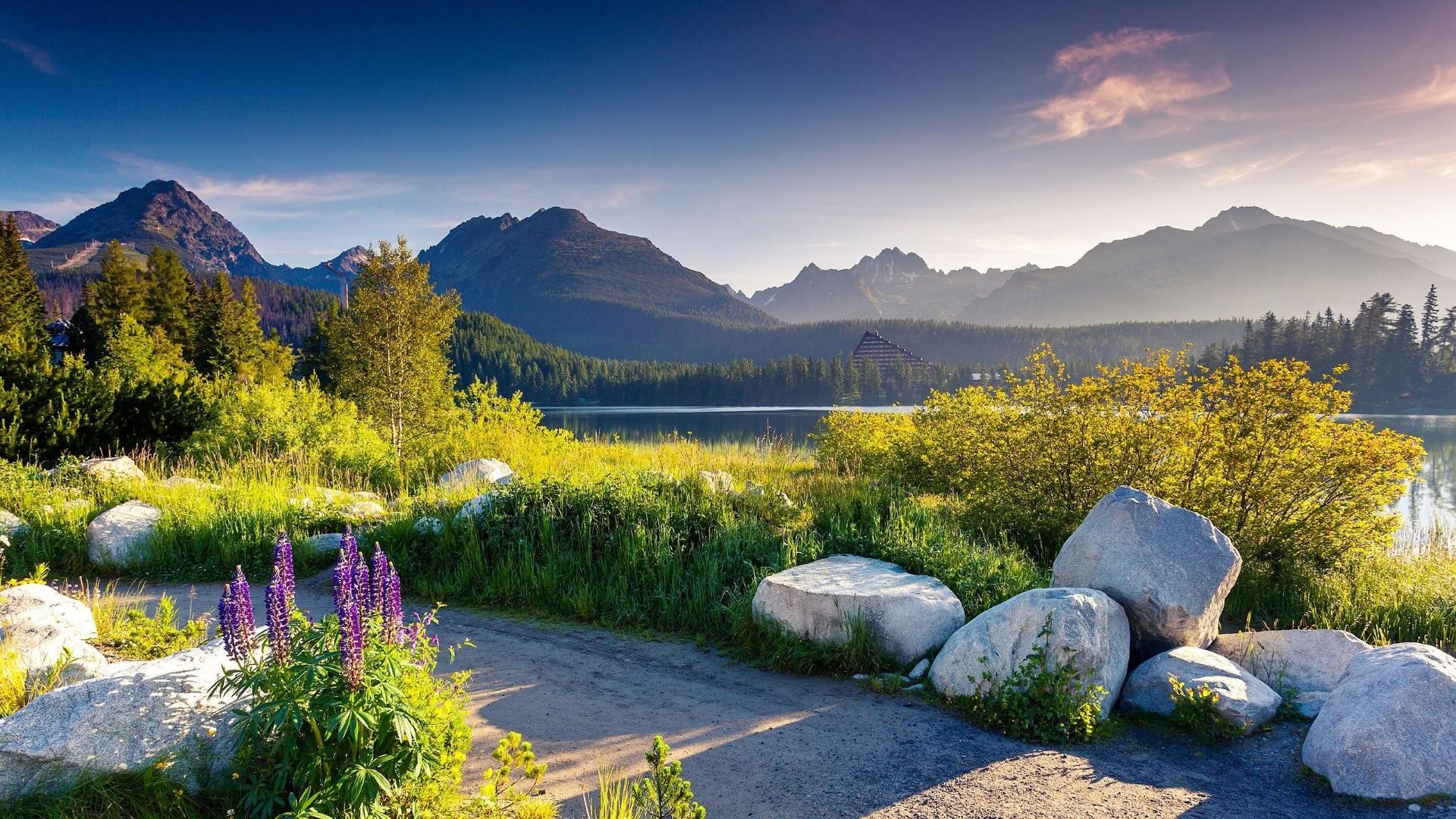
Slovakia
Step 1.1 - Similar to Czechia
Important note: The following information is commonly shared with Czechia. While there are occasional differences, these tips are used to identify both countries.
Slovakia and Czechia both use a special kind of type B guardrail, which is wider than the normal type. No other European countries use the same kind.
NOTE: While Czechia uses this type fairly consistently, Slovakia also uses other types occasionally. For a good overview of European guardrails, see this infographic.
You may also see concrete poles with trident poletops, with two arms angled upwards. Some features, such as the number of insulators, will vary, however the general shape will be the same. Out of the pole tops listed, these are the least common, but unique to the two countries.
Slovak and Czech chevrons are white with red arrows. Less commonly, you may find red on yellow chevrons.
Hiking markers, made up of one colourful strip between two white ones, are commonly found in Slovakia and Czechia. They sometimes form an arrow.
NOTE: While by far being the most common in Slovakia and Czechia, similar signs can be found in other European countries such as Poland, Hungary and Germany.
Like all of the former Eastern bloc, prefabricated panel apartment buildings are a common sight in urban areas. What distinguishes Slovakia and Czechia is the relatively good maintenance often combined with vibrant colours and patterns. Some smaller buildings also adhere to this style.
NOTE: To a lesser extent, you can find this kind of architecture in neighbouring countries, like Poland and Hungary.
Step 1.2 - Different than Czechia
Important note: The following information is not commonly shared with Czechia. While there are occasional similarities, these tips are used to identify Slovakia rather than Czechia.
Slovak and Czech are mutually intelligible Slavic languages with several similarities such as acute accents above vowels (á, é, í, ó, ú, ý). However, they both have some distinct letters:
Slovak uses the letters Ľ, Ô, Ä, Ŕ and Ĺ;
Czech uses the letters Ř, Ě and Ů.
NOTE: Acute accents on vowels are not found in South Slavic languages.
The Slovak landscape varies between very mountainous and completely flat. Generally speaking, Czechia is hillier, but less mountainous.
Slovakia uses blue directional signs, with small white arrows.
NOTE: Czechia has large filled in white arrows instead.
Slovak road signs commonly have the painted sign border right at the edge of the sign.
NOTE: The borders on Czech signs are almost always separated from the edge of the sign by a strip in the signs background colour.
The top of Slovak sign posts are typically either open, have a grey metal cap or a thin black cap.
NOTE: Most Czech sign posts have a thick black cap.
Slovakia uses two major pedestrian signs, both having five stripes. The first has a simply drawn person with a belt, and the second has the stripes very close together.
NOTE: The same belted design is found in Germany. A similar design, with a distinctly lower belt, is found in Hungary. While very rare, pedestrian signs with similarly condensed stripes can also be found in Czechia.
Slovak kilometre markers typically have two sections divided with a black horizontal line. The top section contains the road number.
NOTE: Czech kilometre markers do not have a black horizontal line.
Slovak cycling signs use the letter C as their symbol, unique to the country. They’re visually analogous to the Czechoslovak hiking markers mentioned in step 1.1, including the yellow post on directional signs.
Many Slovak houses have the short side facing the road with the roof ending in a hip end.
NOTE: This is also very common in Hungary, but less common in Czechia.
The Slovak railway crossing sign has a white rectangular background.
NOTE: Czech railway crossing signs do not have a background.
Slovakia recently changed its standard bollard to a design very similar to the one found in Hungary: a standard European wedge-shaped bollard with a red front reflector. Note that for the time being, this bollard is still very rare.
It is somewhat more common to see wooden poles, and in turn, white concrete supports in Slovakia rather than in Czechia.
Note that because there are many variables, it may sometimes be inconsistent. Therefore, this information should preferably be used to help decide between a difficult fifty-fifty.
Apart from the major highways, for which the numbers do not follow any clear pattern, there are two types of numbered roads in Slovakia: 3-digit and 4-digit roads. While many 3-digit roads do not follow any pattern, the ones between 500-560 are generally ordered from west to east. Similarly, the 4-digit road numbers also increase to the east.
You can click on the image to enlarge it.
Concrete poles in Nitra and Trnava regions commonly have yellow circles painted on them, usually containing a number. They are also occasionally found in adjacent regions.
NOTE: This is only the case with circles, other shapes are found elsewhere in the country.
Two wide valleys surrounded by tall, often sharp mountains can be found in the northern parts of the country. Due to the directions of the valleys, figuring out the direction to the closest mountain is typically enough to differentiate the two.
NOTE: The light red area has tall, sharp mountains to the northwest, and much lower hills and mountains to the southeast.
In the northeastern parts of the Prešov region, you may find bilingual town entry signs in Rusyn, a Cyrillic based language closely related to Ukrainian.
Bratislava and Košice are the only two cities with trams, using a red and a yellow-blue-white colour scheme respectively.
NOTE: Buses in Košice and Bratislava use the same colour schemes, however red buses can also be found in Prešov.
Trolleybuses in Žilina use a green-yellow-white colour scheme. The trolley supporting electricity poles, often doubling as lamps, are painted with matching yellow and green colours.




















































